Add compost to an existing garden by using it as a top dressing. Mix compost with aged manure to supercharge it with nutrients and layer it on top of the soil under the plants. Rake back mulch that is thicker than 1 inch or layer it on top of thinner mulch layers. Cover the compost with 2 inches of new mulch and water it all in.
This article will explore my top 8 tips for successfully adding compost to an existing garden. These tips will help you to add organic matter to your soil, will prevent any damage to your plants and help to feed soil bacteria and worms.

Top 8 Tips to Add Compost to an Existing Garden
Here are my top tips to add compost to an existing garden to feed your plants and boost plant health.
1. Rake back old mulch
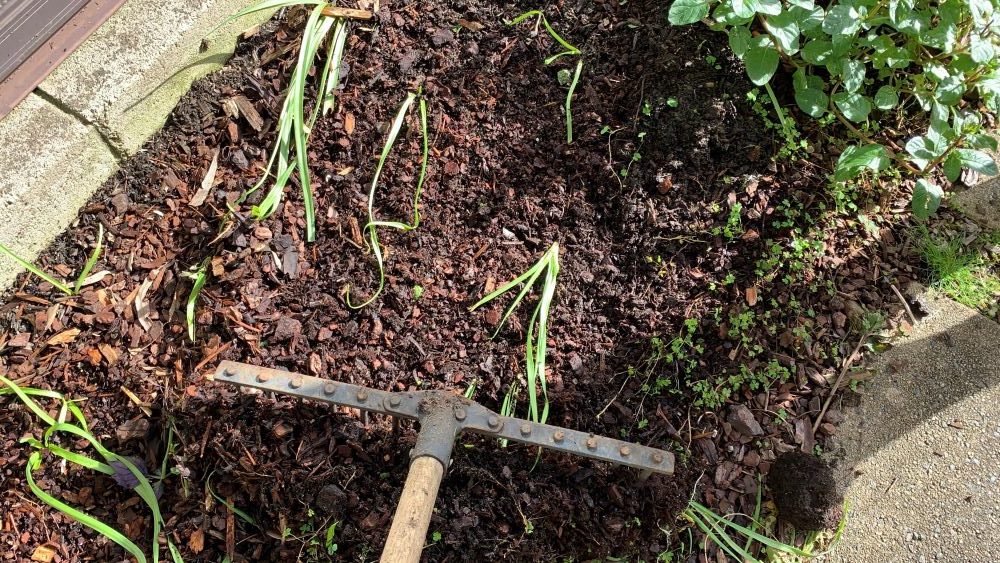
The first step when adding compost to an existing garden is to rake back old mulch. This is the best way to help the compost make contact with the soil and reach the plant roots quicker.
The old mulch can be placed in a bucket or wheelbarrow and placed back on top of the soil after. You can also put the old mulch into your compost bin to help it to fully break down. You can also use old mulch in your worm bin as extra worm bedding.
Note: if the mulch is in a thin layer and you can see the soil you can leave it on the soil and just cover it with compost it will break down slowly over time.
2. Add aged cow manure
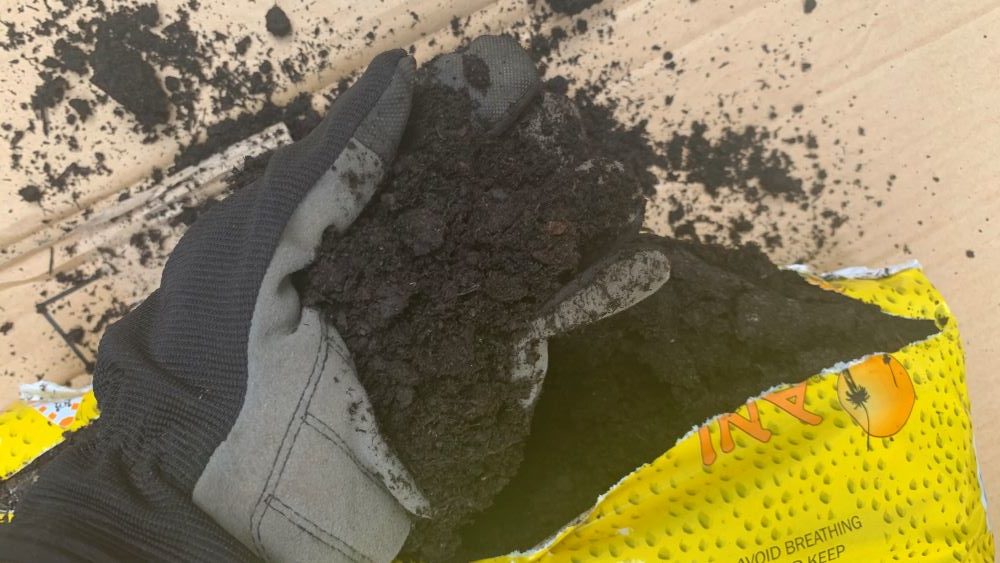
Mixing in aged manure with your compost is the ideal way to supercharge your compost. Add a few handfuls of aged chicken manure or add aged cow or chicken manure from bags.
My favorite manures are cow and chicken. For all gardens, cow manure is great because it is a mild fertilizer and will not overwhelm the plants with any particular nutrients. Cow manure is high in carbon and is low cost. It is a great way to bulk out home compost if you only have a small amount.
3. Sprinkle compost on top
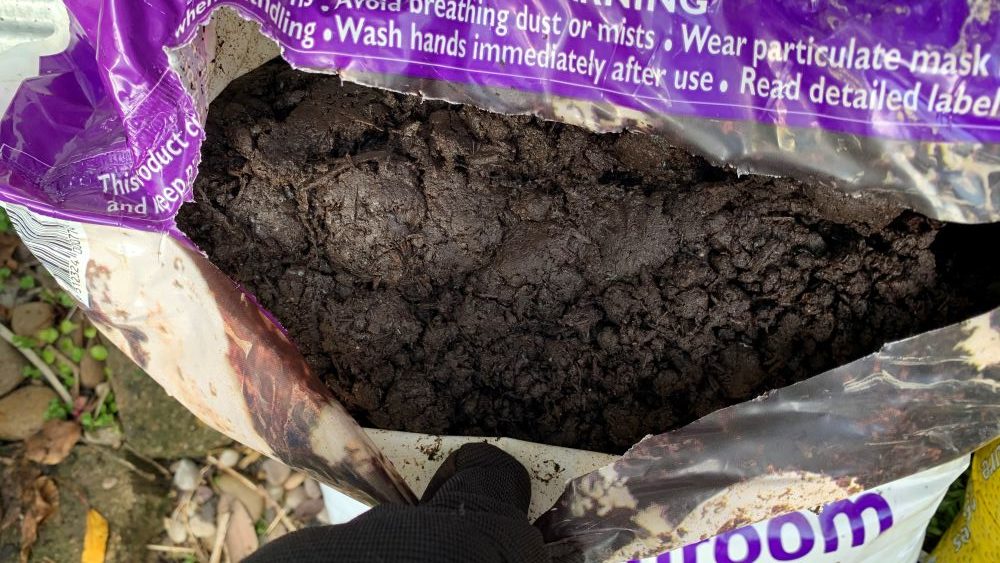
The best way to add compost to established plants is to sprinkle it on top of the soil. Once the old mulch has been raked back use a shovel and scoop it on top of the soil. You can pour a whole bag on top of the soil and spread it out after.
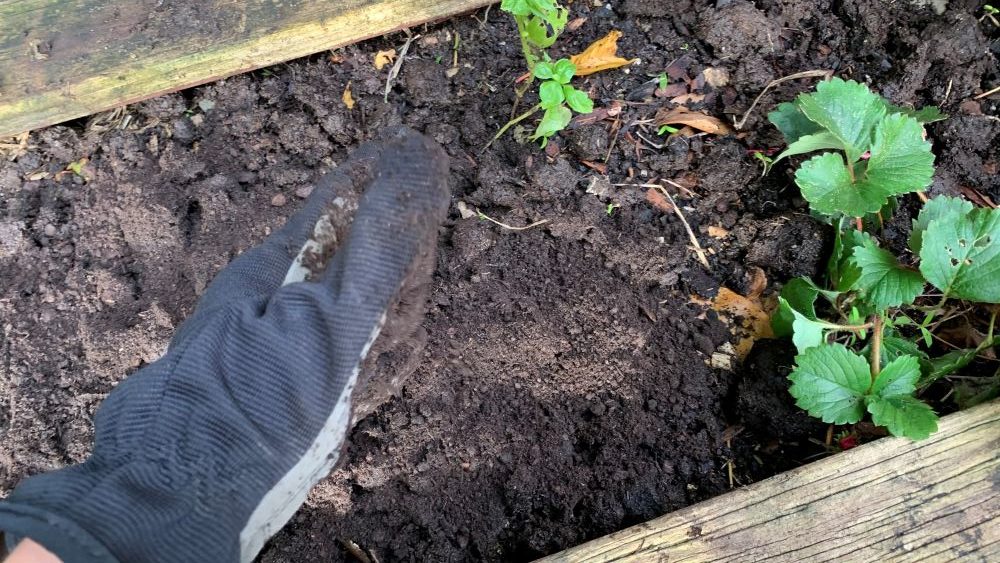
4. Spread evenly with a rake
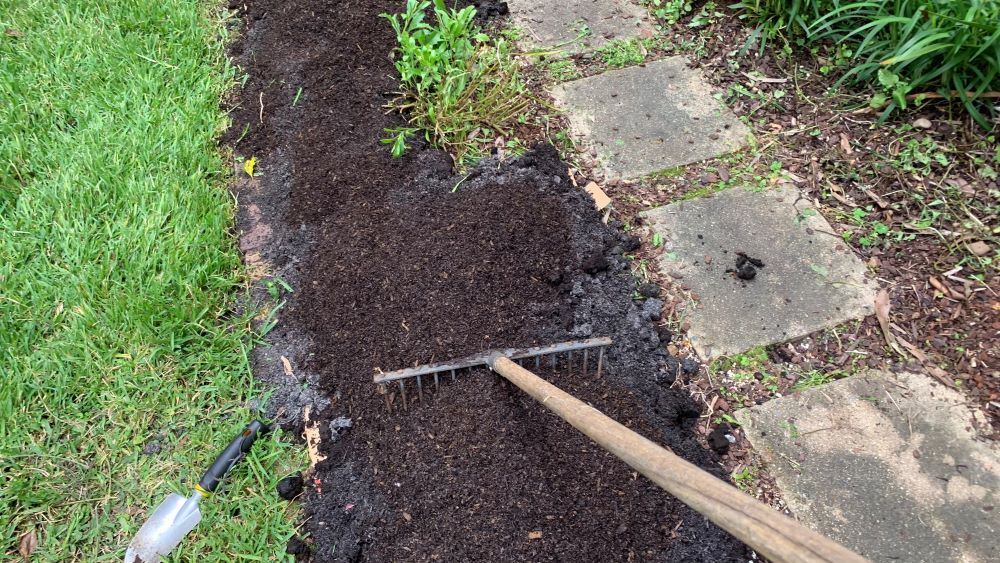
Spread the compost and aged manure mix to around 1-2 inches thick. This will feed the soil slowly over time and will allow rain to penetrate through to the plant roots. This will help the aged manure and compost to mix if you have added them together. This will help to feed your plant and add organic matter to the soil.
5. Gently stir through away from plant roots

If you are adding compost to the soil near your established plants you can gently mix it through the surface of the soil. If it is outside of the root zone, which is outside of the tree canopy area, and perhaps a foot extra you can mix the compost in gently.
I only like to mix compost through the 4-5 inches of soil at the moist. I will allow bacteria and worms to move in and naturally mix it through. Take care near citrus trees because they have delicate roots near the surface of the soil.
6. Add pelleted chicken manure

After adding your compost to the top of the soil sprinkle over a handful of pelleted chicken manure. This is the perfect way to top dress citrus and other established fruit trees in spring. This will help to feed the small feeder roots near the surface of the soil without burning them.
7. Cover the compost with mulch

The next step is to cover the compost layer with mulch. I like to choose bark mulch for flower beds and straw mulch for vegetables. Bark mulch will last longer than straw mulch which is good for perennial pants and trees.
For annual fruit and vegetables use straw, sugar cane or hay to mulch around them so it will break down and you can dig it through at the end of the season.
8. Water it all in well
The final step is to water the compost, aged manure and mulching it well after laying it on the soil. This will help to settle the compost and aged manure into the soil, will encourage the growth of good soil bacteria, will attract worms and will weigh the mulch down.
All of these ingredients will be broken down by the soil bacteria and worms to release the nutrients making them available for the plants to absorb.
Types of compost for established plants
Here are my favorite types of compost to use for established plants. All of these have their own benefits and work well when mixed together.
1. Homemade compost
Homemade compost is great because you will know exactly what you put in it, you can recycle and save waste at home and it is easy to get. Place your compost pile near your vegetable garden and you can easily top dress established plants when the compost is ready.
Wait until homemade compost is dark and crumbly and the pieces have been mixed together and broken down thoroughly.
2. Commercial compost
Commercial compost is a great option if you can’t make compost at home. You can purchase it in small bags or order it in large loads from landscape suppliers. I like to buy compost because I can’t produce enough at home in my small compost pile.
3. Enriched Compost

Commercially made compost that is enriched with seaweed is one of my favorite new ingredients. Seaweed will help to promote root growth, soil bacteria growth and adds extra organic matter to the soil.
3. Mushroom Compost
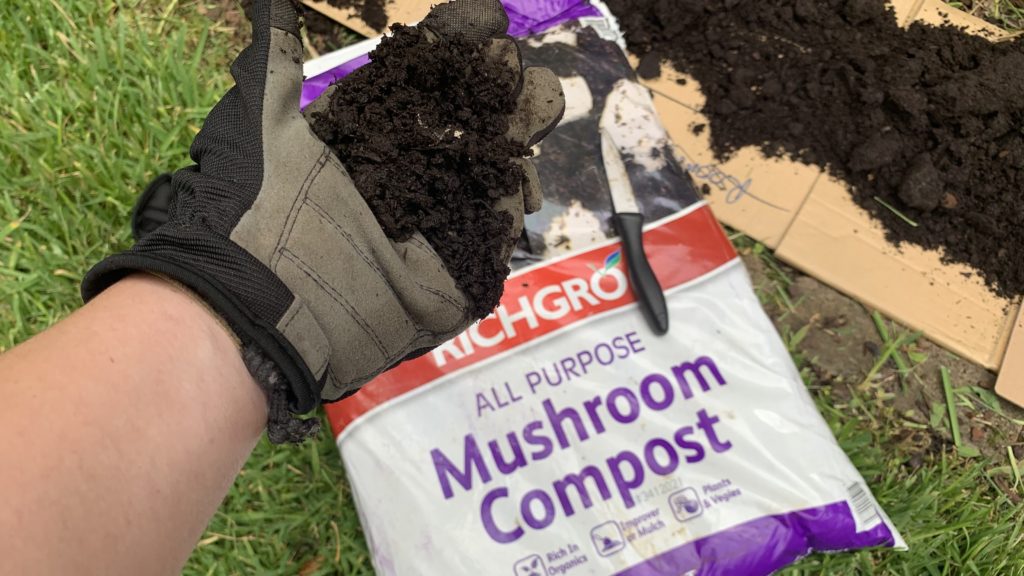
Mushroom compost is a waste product from the mushroom growing industry. This is bagged up growth medium that the mushrooms were growing in. I think this is a great compost to mix with other compost types. You can use it to top up your homemade compost or mix it with aged manure as a great top dressing.
How to Add Compost to an Existing Garden | Summary
The easiest way to add compost to an existing garden is to top dress the soil around the root zone. I like to rake back thick layers of old mulch but thin layers can be left on the surface. Cover the root zone with 2 inches of compost and add in some aged manure if you have it. Cover it with mulch and water it all in well.
This method of top dressing with compost will still feed the soil without disturbing the plant roots. This works well for fruit trees, large established trees, perennial flowers and vegetables.
Happy growing.
I am an accredited practicing dietitian, experienced gardener and a dedicated cook. I love writing and sharing my experience so you can learn from my successes and mistakes.
